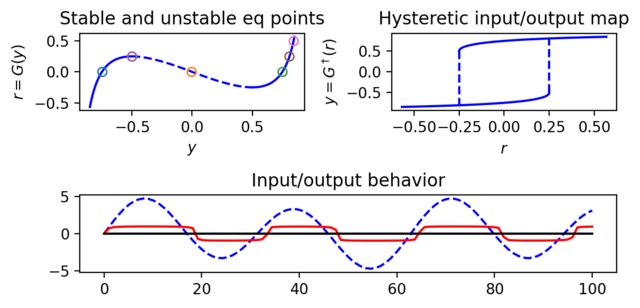Figure 2.19: System with positive feedback and saturation
| Chapter | Feedback Principles |
|---|---|
| Figure number | 2.19 |
| Figure title | System with positive feedback and saturation |
| GitHub URL | https://github.com/murrayrm/fbs2e-python/blob/main/figure-2.19-posfbk saturation.py |
| Requires | python-control |
Figure 2.19: System with positive feedback and saturation. (a) For a # fixed reference value r, the intersections with the curve corresponds to equilibrium points for the system. Equilibrium points at selected values of r are shown by circles (note that for some reference values there are multiple equilibrium points). Arrows indicate the sign of the derivative of away from the equilibrium points, with the solid portions of representing stable equilibrium points and dashed portions representing unstable equilibrium points. (b) The hysteretic input/output map given by , showing that some values of have single equilibrium points while others have two possible (stable) steady-state output values. (c) Simulation of the system dynamics showing the reference (dashed curve) and the output y (solid curve).
# figure-2.19-posfbk_saturation.py - positive feedback with saturation
# RMM, 22 Jun 2021
#
# Figure 2.19: System with positive feedback and saturation. (a) For a
# fixed reference value r, the intersections with the curve r = G(y)
# corresponds to equilibrium points for the system. Equilibrium points
# at selected values of r are shown by circles (note that for some
# reference values there are multiple equilibrium points). Arrows
# indicate the sign of the derivative of y away from the equilibrium
# points, with the solid portions of r = G(y) representing stable
# equilibrium points and dashed portions representing unstable
# equilibrium points. (b) The hysteretic input/output map given by y =
# G+(r), showing that some values of r have single equilibrium points
# while others have two possible (stable) steady-state output val-
# ues. (c) Simulation of the system dynamics showing the reference r
# (dashed curve) and the output y (solid curve).
import numpy as np
import matplotlib.pyplot as plt
import control as ct
# Nonlinearity: forward and reverse
def F(x):
return x / (1 + np.abs(x))
def Finv(y):
return y / (1 - np.abs(y))
# Equilibrium calculation
a = 1; b = 4; # parameters for the system dynamics
def G(y, a=a, b=b):
return a * Finv(y) / b - y
#
# Stable and unstable equilibrium points
#
plt.subplot(2, 2, 1)
plt.title('Stable and unstable eq points')
plt.xlabel('$y$')
plt.ylabel('$r = G(y)$')
# Define the stable and unstable branches
ymax = -1 + np.sqrt(a/b) # First maximum (negative value)
y_stable = np.linspace(-ymax, 0.85, 100)
y_unstable = np.linspace(ymax, -ymax, 100)
# Plot the locus of equilibrium piots
plt.plot(-y_stable, G(-y_stable), 'b-')
plt.plot(y_unstable, G(y_unstable), 'b--')
plt.plot(y_stable, G(y_stable), 'b-')
# Plot individual equlibrium points
for r in [0, G(ymax), 0.5]:
# Find the values intersecting this value of r
y_left_arg = np.argwhere(G(-y_stable) >= r)
if y_left_arg.size > 0:
y = -y_stable[y_left_arg[-1].item()]
plt.plot(y, r, 'o', fillstyle='none')
y_center_arg = np.argwhere(G(y_unstable) >= r)
if y_center_arg.size > 0:
y = y_unstable[y_center_arg[-1].item()]
plt.plot(y, r, 'o', fillstyle='none')
y_right_arg = np.argwhere(G(y_stable) <= r)
if y_right_arg.size > 0:
y = y_stable[y_right_arg[-1].item()]
plt.plot(y, r, 'o', fillstyle='none')
#
# Hysteretic input/output map y=G+(r)
#
plt.subplot(2, 2, 2)
plt.title('Hysteretic input/output map')
plt.xlabel('$r$')
plt.ylabel('$y = G^\dagger(r)$')
# Plot y versus r (multi-valued)
plt.plot(G(y_stable), y_stable, 'b-') # Upper branch
plt.plot(G(-y_stable), -y_stable, 'b-') # Lower branch
# Transition lines (look for intersection on opposite branch)
plt.plot(
[G(y_stable[0]), G(y_stable[0])],
[y_stable[0],
-y_stable[np.argwhere(G(-y_stable) > G(y_stable[0]))[-1].item()]],
'b--')
plt.plot(
[G(-y_stable[0]), G(-y_stable[0])],
[-y_stable[0],
y_stable[np.argwhere(G(y_stable) < G(-y_stable[0]))[-1].item()]],
'b--')
#
# Input/output behavior
#
plt.subplot(2, 1, 2)
plt.title('Input/output behavior')
# Closed loop dynamics
linsys = ct.LinearIOSystem(ct.tf2ss(ct.tf([b], [1, a])))
nonlin = ct.NonlinearIOSystem(
updfcn=None, outfcn=lambda t, x, u, params: F(u),
inputs=1, outputs=1)
posfbk = ct.feedback(nonlin * linsys, 1, 1)
# Simulate and plot
t = np.linspace(0, 100, 100)
r = 4 * np.sin(0.2 * t) + np.sin(0.1 * t)
t, y = ct.input_output_response(posfbk, t, r)
plt.plot(t, r, 'b--')
plt.plot(t, y, 'r')
plt.plot(t, np.zeros_like(t), 'k')
plt.tight_layout()




